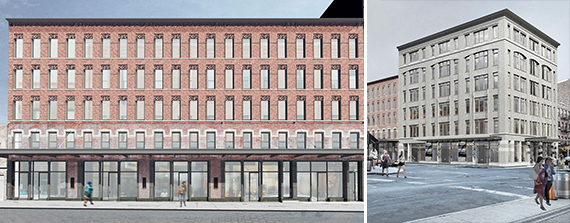Trending
Aurora, Landmarks sued over Meatpacking District project
Opposition group Save Gansevoort wants approvals for development revoked

When the Landmarks Preservation Commission approved a new commercial development in the Meatpacking District, it imperiled other landmarked areas in the city, a lawsuit filed on Friday alleges.
Save Gansevoort, a vocal opposition group, filed a lawsuit against Landmarks and developers Aurora Capital Associates and William Gottlieb Real Estate in New York State Supreme Court on Friday, seeking to reverse the commission’s approval of a project at 60-68 and 70-74 Gansevoort Street. Landmarks approved the project entire project — 46-74 Gansevoort Street — in June, despite objections from the group that the buildings planned for the neighborhood were too tall.
In its lawsuit, Save Gansevoort revives its argument that Landmarks erroneously relied on an historic period that predated the area’s identity as a meat market district when it approved the Gansevoort Street project. The commission argued that the district was once home to tenement buildings that rose high above the low-rise market buildings that later became associated with the neighborhood. By this standard, Landmarks wrongly determined that Aurora’s buildings — one of which will rise 82 feet tall — stayed true to the district’s history, the lawsuit alleges. Save Gansevoort asserts that Landmarks designated the district as historic in 2003 based specifically on its historical and architectural significance as a market district.
“Unless annulled, vacated and reversed, the determination would pose a risk to every district in New York City, as [Landmarks], henceforth would be free to remove the very historic, culture and aesthetic fabric of every designated neighborhood,” the lawsuit states.
As part of the project, the developers will be redeveloping five market buildings and creating some 50,000 square feet of boutique commercial space and 100,000 square feet of retail.




